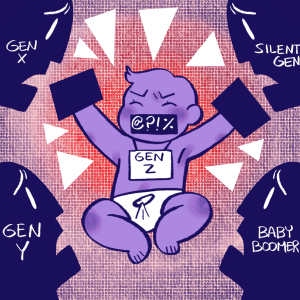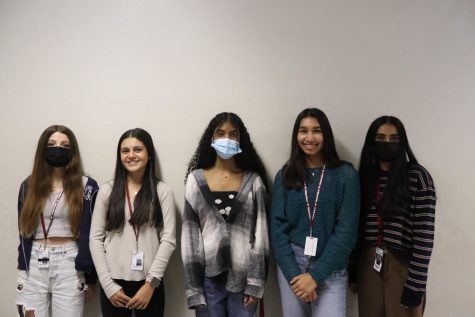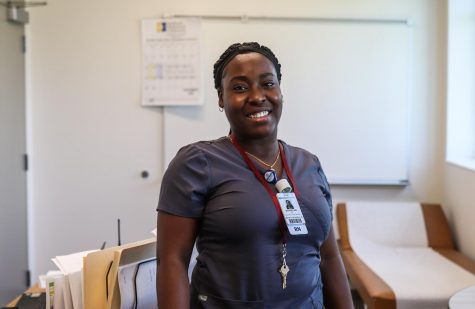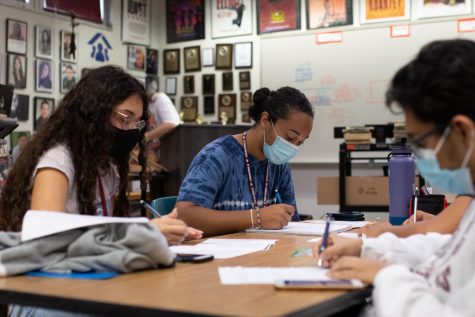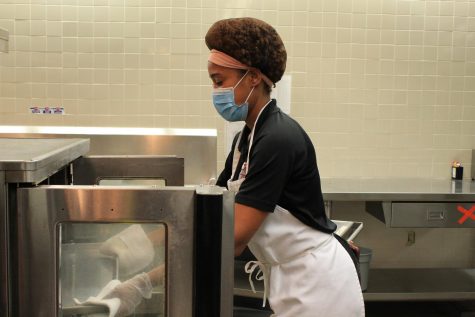MSD makes changes in its approach to online learning compared to last school year
September 17, 2020

As a result of the ongoing COVID-19 pandemic, many aspects of everyday life are being adjusted to keep people safe and in compliance with the Center for Disease Control and Prevention guidelines. In today’s world, it is now normal to never leave your house without a mask and hand sanitizer, as well as actively participate in social distancing.
In an effort to lower the number of COVID-19 cases and prevent overburdened hospitals, many places where large crowds could gather have since been closed down, including concert venues, movie theaters and schools. Instead of attending in-person schooling, many districts have shifted to online learning through sites like Zoom, Microsoft Teams and Canvas, all online platforms that support educational institutions.
For students at Marjory Stoneman Douglas High Schools, Friday, March 13, was the last official day of physical school they attended for the 2019-2020 school year. Since it was the week before spring break, many students were under the assumption that they would simply be getting an extra week of break. Little did students know, online school would continue for the rest of the school year and into the 2020-21 school year.
Students began virtual school on Monday, March 30, after spring break. Students were told that school was going to remain the same and be structured as similar to physical school. However, it turned out to be very different from the last school year, as was the beginning of the 2020-21 year compared to the last few months of the 2019-2020 school year.
Students started school on Wednesday, Aug. 19, and began first period at 8:30 a.m instead of at 7:40 a.m.
The school day continues to follow block schedule, beginning with period 1 or 5 after attending period 2 or 6, there is a 30-minute lunch break. To finish off the day, students attend periods 3 or 7 and 4 or 8
This schedule is seemingly well-liked by many students; however, some consider the 30-minute lunch period too short for their liking.
“A thirty-minute lunch is way too short because we are on our computers for three hours before lunch, and we need a longer break before our next class starts,” sophomore Emma Betancourt said.

Online classes this school year are now held on Teams instead of Zoom, which initially caused issues for students and teachers alike. There was an adjustment period where everyone had to learn how to utilize the new application.
“The first week of school I had many of my teachers have issues sharing their screens or trying to create breakout rooms, while there were kids in every class that could not figure out how to join or kept getting kicked out,” senior Jessica Virk said.
Back in March, various students thought that teachers would be required to host live meetings for their classes every day over Zoom, but not many teachers ended up having live sessions at all.
When a live session was held, it was rarely 90 minutes long and was predominantly used as a forum for students to ask questions about the upcoming work rather than a lecture. Now, teachers are required to hold the class in a call for the complete 90 minutes, while only allowing 5 minutes to switch classes.
“Personally, I do not like Teams as much as Zoom because it is harder to use and to operate. Zoom lets us see more people clearly, while Teams only shows a few,” sophomore Morgan Fink said.
During the initial switch to online learning, students claim that teachers assigned far more homework than they did in physical school. However, some students claimed that there was not much instruction for any of the given assignments, and quickly became agitated.
“The teachers put out a lot more work last year since we have switched from online school to regular school and I became frustrated very quickly,” junior Michelle Keane said.
Nearing the end of the school year, many students were simply trying to finish the year with good grades, instead of trying to learn.
“Last [school] year was easier since I knew what my classes were like and the type of work I needed to do in person, but I quickly became unmotivated to do school since the teachers did not help us figure the work out,” Betancourt said.
Before school started, administration began reaching out to parents on tips and tricks their students can use to have a successful year in the form of tutorial videos. At the same time, administration spent the summer preparing and educating their teachers with their expectations for online learning. Throughout the summer, the staff attended training given by administration in order to effectively prepare them.
“Administration has been very supportive in the development of the online learning curriculum and they’ve provided tons of resources for teachers to utilize their own planning,” English teacher Kristen Coniff said. “We were able to prepare more effectively rather than having to react to circumstances out of our control.”
This school year, Canvas is also utilized very differently. It contains each class’ agenda for the entire first nine weeks and has all assignments visibly laid out. According to students at MSD, the Canvas is much easier to navigate and is more organized than last school year.
Although it is only the third week of school, most students have noticed that this year’s structure is much more organized, given the extra time the school had to prepare.
“Last year was more chill and easy, while this year is a lot more structured,” senior Josh Kramer said.
Overall, the end of the 2019-2020 school year was a rather difficult and confusing time for students and teachers alike, as they quickly switched from in-person schooling to sitting behind a screen for hours at a time. Therefore, the staff and administration has strived to make the start of the 2020-21 school year much more navigable and more structured.










